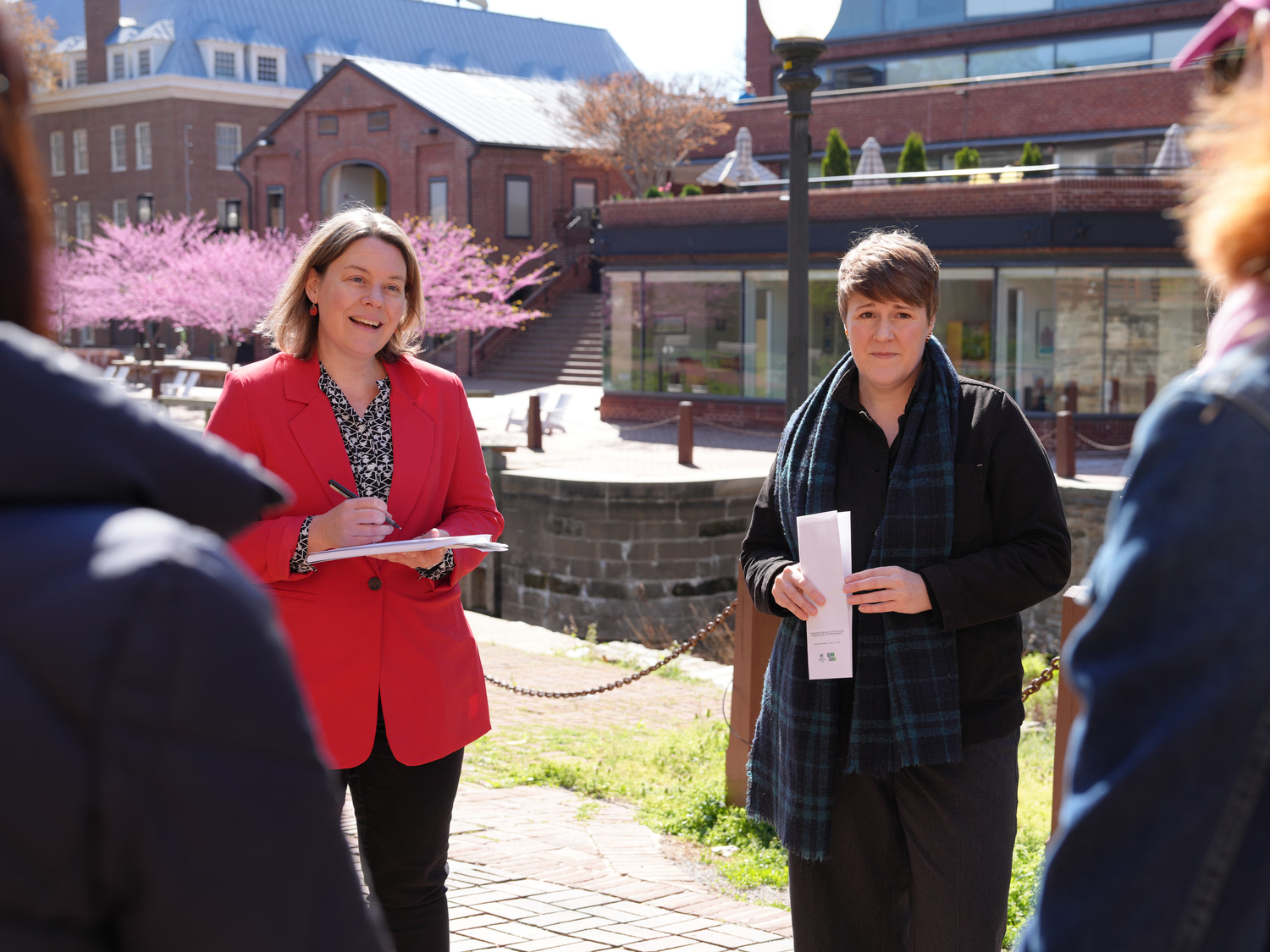Download our new guide to historic tax credits here.
The regeneration of existing places is a golden opportunity to address the two most pressing issues of our time: the climate crisis and social inequity. Through reusing, adapting, and renewing existing buildings, we can reduce carbon emissions and revitalize communities.
Historic tax credits are a powerful tool for financing transformative renovations that make our communities safer, more beautiful, and more sustainable.

The Federal Historic Preservation Tax Incentives Program
The Federal Historic Preservation Tax Incentives program, commonly known as the federal historic tax credit program, can make the reuse of historic buildings economically feasible—allowing communities to convert underutilized structures into needed rental housing, commercial spaces, or other productive uses. Since 1976, more than 47,000 buildings have been given new life using federal historic tax credits to help with project financing—many of which have also benefitted from additional federal or state tax credit programs.
The federal historic tax credit program provides a 20% federal income tax credit for qualified rehabilitation expenditures, including most construction and design costs as well as certain holding costs such as insurance and property taxes. (Note that the federal historic tax credit program no longer includes the former 10% tax credit, which was repealed in 2017.) Tax credits are a dollar-for-dollar offset of the recipient’s tax burden—unlike tax deductions, which lower the recipient’s taxable income.
QUALIFYING FOR FEDERAL HISTORIC TAX CREDITS
To qualify for the federal historic tax credit, a project must meet four criteria:
1. The structure must be listed in the National Register of Historic Places or be certified as contributing to the significance of a registered historic district.
If the property is located within a National Register district or a certified state or local historic district, it still must be designated by the National Park Service (NPS) as a structure that retains historic integrity and contributes to the historic character of the district. If you find that your building is not listed as a certified historic structure, you can nominate it to the National Register.
2. The project must meet the substantial rehabilitation test.
The cost of rehabilitation must exceed the pre-rehabilitation value of the building. NPS determines that this requirement has been met through the substantial rehabilitation test: the cost of the project exceeds $5,000 or the building’s adjusted basis, whichever is greater. Generally, the substantial rehabilitation test must be met within two years; a project completed in multiple phases must meet the test within five years.
3. The work must comply with the Secretary of the Interior’s Standards for Rehabilitation.
The Secretary of the Interior’s Standards for Rehabilitation are ten principles that, when followed, ensure the historic character of a building is preserved even as it undergoes a major renovation or change of use.
4. After rehabilitation, the historic building must be used for an income-producing purpose for at least five years.
The historic tax credit is available only to properties rehabilitated for income-producing purposes. These include commercial, industrial, agricultural, and rental residential use. The federal historic tax credit cannot be used to rehabilitate a private residence.

APPLYING FOR FEDERAL HISTORIC TAX CREDITS
The application for historic tax credits is called the Historic Preservation Certification Application. It has three parts, which must be submitted digitally to the State Historic Preservation Office for the state in which the project is located:
Part 1, the Evaluation of Significance, presents information about the significance and appearance of the building. Technically, a Part 1 need not be submitted for a single building already individually listed in the National Register, but we suggest always submitting a Part 1 to capture any changes that may have occurred in the building’s condition since it was originally listed.
Part 2, the Description of the Rehabilitation, describes the condition of the building and the planned rehabilitation work. The proposed work will be evaluated based upon its adherence to the Secretary of the Interior’s Standards for Rehabilitation. Parts 1 and 2 are submitted before construction begins.
Part 3, the Request for Certification of Completed Work, is submitted after construction is finished and documents that the work was completed as proposed. NPS approval of Part 3 of the application certifies that the project meets the Standards and is a “certified rehabilitation.”
State and Local Historic Tax Credit Programs
In addition to the federal historic tax credit program, 37 states provide historic tax credits. The project requirements, value of historic tax credits, and competition for funding vary by state. The National Trust for Historic Preservation offers a comparison of state historic tax credit programs.
Some localities, like Baltimore, offer local historic tax credits or other incentives for the redevelopment of historic buildings. Ask the local historic preservation office in the project’s vicinity about such programs.

Historic Tax Credit Syndication
Most recipients of historic tax credits (usually a developer or non-profit organization) choose to syndicate them—to transfer the tax credits to an investor. Tax credit syndication requires the building owner and an investor to form a legal entity like a limited partnership or limited liability company. This arrangement allows the building owner to receive capital sooner, while the investor claims the tax credits over a period of five years after construction is completed.
Learn More About Historic Tax Credits
The reuse of aging buildings can be a financially challenging undertaking; building infrastructure must be updated or replaced, hazardous materials may need to be removed, and unforeseen conditions abound. Fortunately, historic tax credits can help by providing funding to bridge the gap between available financing and actual project costs.
Quinn Evans brings deep expertise in the design of rehabilitation projects for a wide range of historic buildings. Our portfolio includes more than 60 projects that have received historic tax credits. In addition to developing designs that meet the Secretary of the Interior’s Standards for Rehabilitation, we have the in-house resources to completely manage the three-part federal historic tax credit application for our clients.
Learn more about historic tax credits by downloading our new guide, Navigating Historic Tax Credits: A Guide to Funding Transformational Capital Projects Through the Federal Historic Preservation Tax Incentives Program. The guide includes in-depth discussion on designing to the Secretary of the Interior’s Standards for Rehabilitation, listing buildings in the National Register for Historic Places, stacking historic tax credits with other federal and state tax credits, and more.








